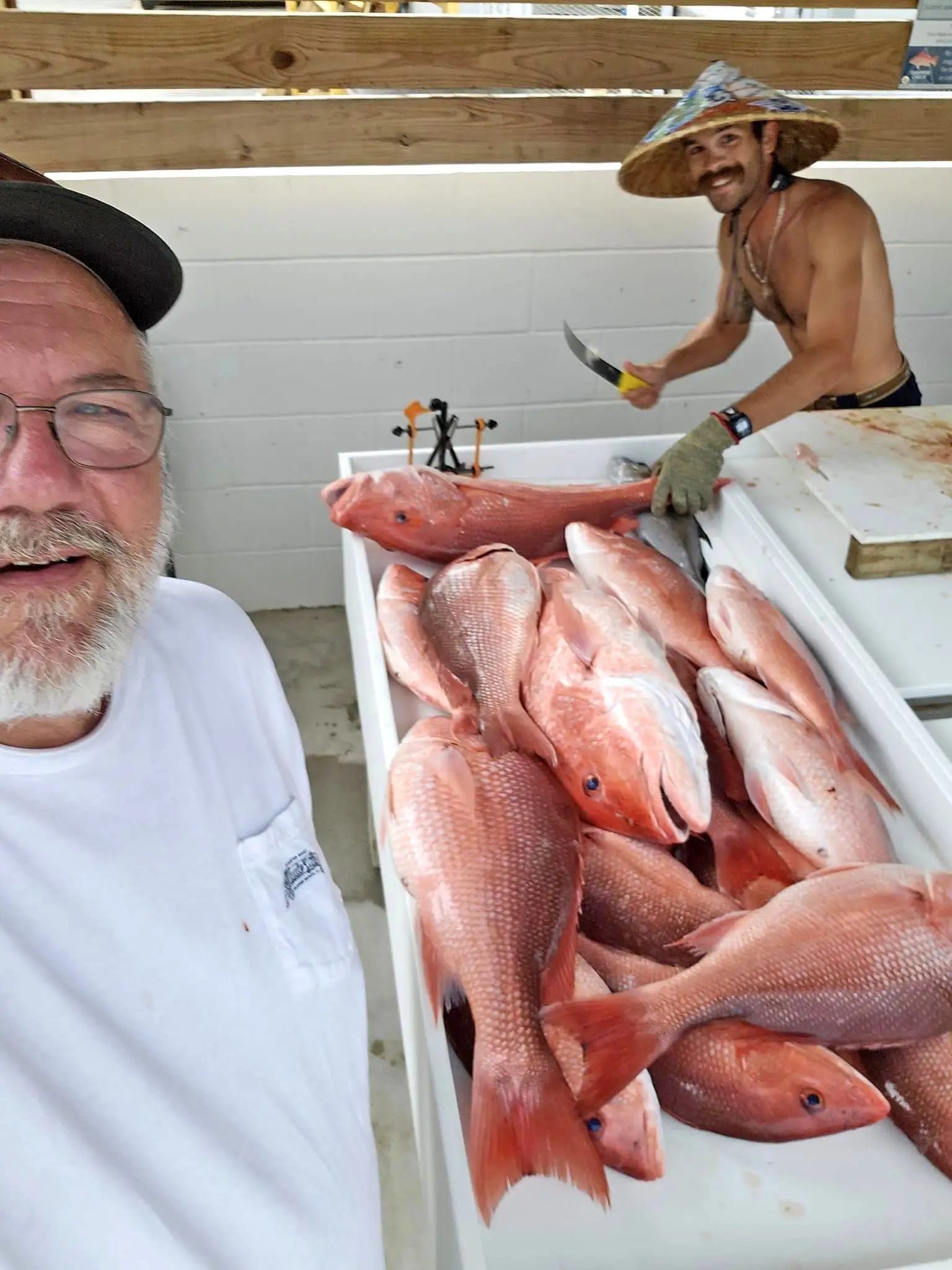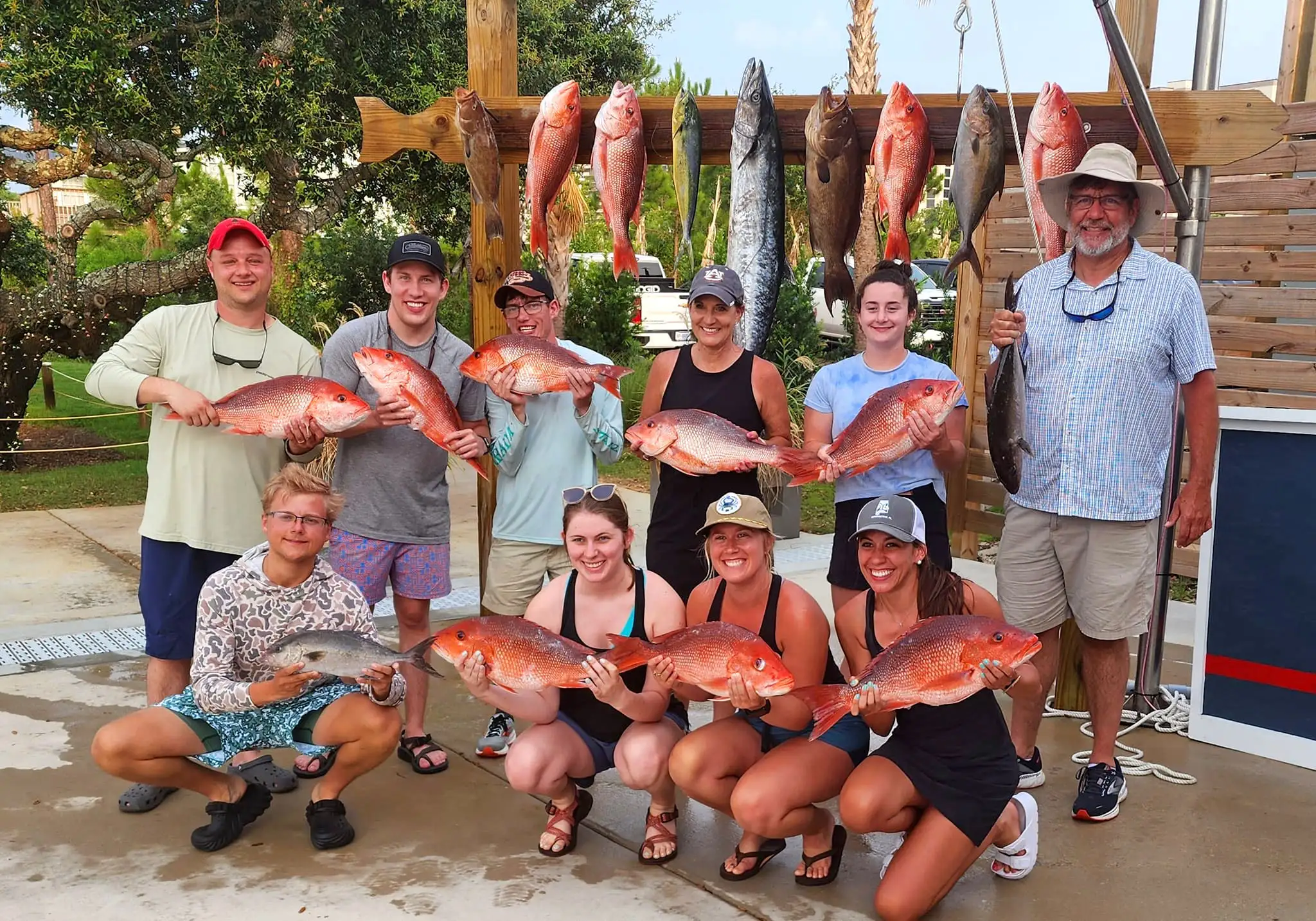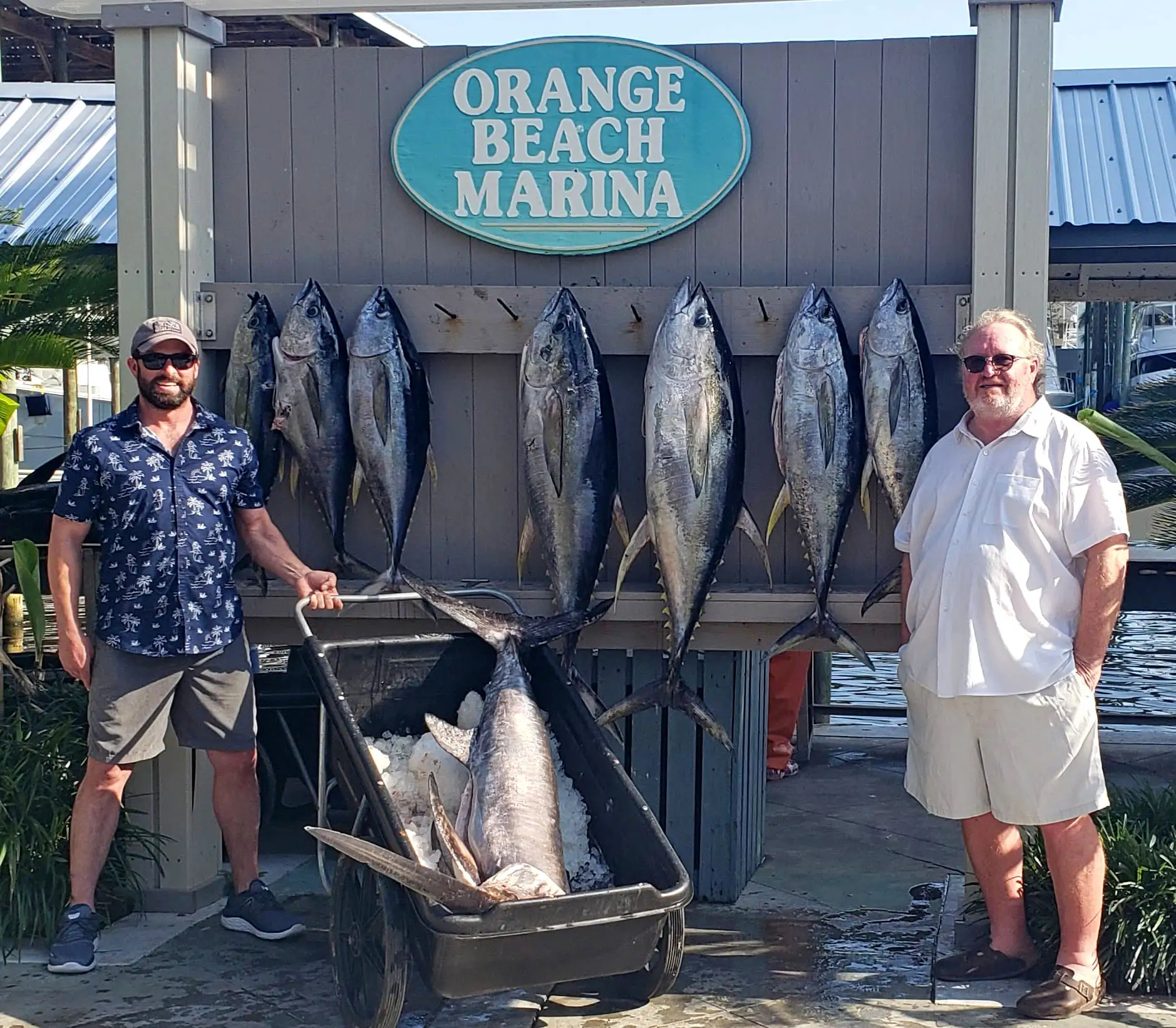TYPES OF FISHING
Bottom Fishing
Bottom fishing is one of the most popular types of fishing along the Gulf Coast. Snapper, Trigger Fish, Mackerel, Cobia, Grouper, Bonita, and Wahoo are top the list of the species you may encounter. The Gulf Waters off of the coast of Alabama have a diverse environment which promotes a thriving marine ecosystem. Natural bottom structure of rock ledges and coral heads in the deeper waters ( 200 to 300 feet deep) are home to species such as Grouper, Scamp, Vermilion Snapper and Amberjack. Trolling in the upper water column here can produce Wahoo and Black Fin Tuna. The shallower waters (75 to 150 feet) have very little natural bottom structure. The pioneers of fishing in our area discovered that man made habitat in these areas not only produced new fishing grounds but it also created a new environment and ecosystem that reproduces. These artificial environmentally friendly reefs are inspected and permitted by the Alabama Conservation Department before deployment. Today Alabama is proud to have the largest artificial reef program in the country and only 2nd to Japan in the world.

Offshore Fishing
Marlin / Tuna / Wahoo / Dolphin
There are many types of fishing: freshwater, saltwater, inshore, offshore, small fish or big fish. All of these types of fishing are interesting to someone, but my favorite type of fishing is billfishing or offshore trolling. It is probably the most challenging form of fishing. There are many controllable an uncontrollable factors that one must overcome as well as a lot of luck involved. First of all, to billfish you must have a good boat capable of handling what may come up while you are offshore. The boat must be sturdy to stand up to sudden storms and heavy seas, the boat must be able to carry enough supplies and food for the entire trip and it must have a place that the passengers can take shelter in rough weather. Many of the boats like this cost well over a million dollars. Also to go billfishing you must have a enormous amount of expensive equipment. At least five rod & reels, which usually run upwards of 1000 dollars each, a fighting chair, which can cost thousands of dollars, 50 or more lures that cost from 25 to 50 dollars each, gaffs, coolers, ice, ropes, outriggers, and most important of all a good captain and crew. It is the captain who tries to take to where the fish are and to do this he must know where the fish are. Your captain is also the one who is responsible for the well-being of the passengers. The captain cannot do all of this by himself so a good crew is essential. The crew is the one responsible for taking out the captains orders and for catching the fish when they are there. The crews job is more a lot more than it seems. There are many preparations that have to be completed before the boat even leaves the dock. All the drags on the reels must be set with a scale so that when a fish hits the line doesn't break. All the hooks must be sharpened. The line checked for frays, hundreds of pounds of ice loaded, food loaded, and the tanks topped off with fuel.Using very sharp hooks is a very important thing for catching blue marlin. The inside of the mouth of a billfish is hard and there is not many places for the hook to lodge. Even with 2 hooks that are 6' long an 3" wide many fish are lost. When we are fishing the hooks are sharpened several times a day with a special sharpening machine so the don't lose their edge while they are running through the water. Another big part of hooking a billfish is in the presentation of the bait. When trolling with plastic lures the baits must be in specific locations. If the bait is not in the proper spot behind the boat then the lure will not imitate a bait fish an the billfish will not be induced to bite. With the advent of plastic lures the rate of catching billfish has doubled because fishermen can now cover many miles in one day instead of staying in one spot. All the tactics of hooking fish are no good if there are not any fish there to be hooked. Before the trip the captain will do much research into where to go fishing. A report from a plane can be bought from pilots or what is called a Roff's report can be purchased. A Roff's report is a satellite report that indicates changes in water temperature. Baitfish are attracted to warm water so the billfish are often in the warm water. Often there are pockets of warm water in certain places that are good places to fish. Other places in the Gulf that are good to fish is such places as the Elbow, Nipple, Double Nipple, Squiggles, and the Canyon. All these names refer to the shape on maps that the hundred fathom curve makes with changes in depth. Baitfish frequent these places often, so they are usually a good place to fish. Another safe bet on a place to fish is around drilling platforms. These are huge platforms out in the gulf that provide good structure for baitfish to live around all the time.

